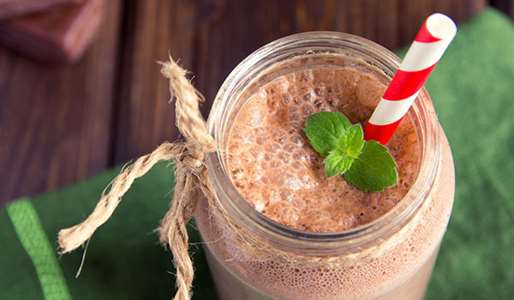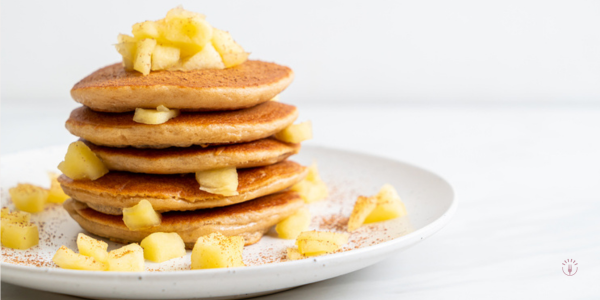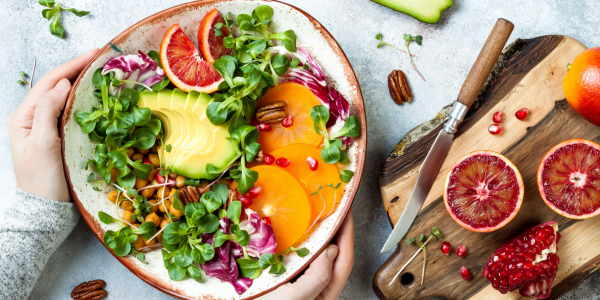
Vegetables aren't exactly known as the most appealing or appetizing part of a meal. But by switching cooking styles, seasonings, and trying fun vegetable recipes, they can take center stage!
Discovering different ways to cook vegetables can make getting enough greens (and other veggies) each day easier. Read on for exciting new ways to cook vegetables, including healthy options that can be made in minutes.
Why Learn How to Cook Veggies?
Experts recommend filling half your plate with fruits and vegetables for many reasons. Vegetables are ripe with nutrients and full of powerful compounds like antioxidants that can contribute to better health. So learning how to cook vegetables using various methods can make them more enjoyable and enticing to eat.
If you don’t like to eat vegetables raw but also don’t feel comfortable cooking vegetables, you may feel stuck and uninspired when it comes to meeting daily vegetable requirements. Fortunately, a subtle change in cooking methods may be all you need!
Plus, changing seasonings or using healthy cooking oils can make all the difference, both for flavor and for health. Some methods are considered “healthier” than others—such as baking versus battering and deep-frying—so familiarizing yourself with different cooking methods can help you make the best decision for a health-focused lifestyle.
Different Ways to Cook Vegetables
Beyond taste, using alternate cooking methods can help you experience meals in a new way. Different cooking methods produce different aromas and textures, which can be especially exciting for families with kids.
Don’t be afraid to combine cooking methods either, such as baking and then broiling. Let’s explore some innovative ways to revolutionize your vegetable dishes.
Steaming or Broiling (with a Twist)
Although steaming and boiling are often described as too basic to bring any flavor, these methods can be more successful with a few tweaks to the process. Both are easy methods for vegetable side dishes supporting a more labor-intensive entree. In other words, boiling and steaming are useful methods for a multitasking cook keeping an eye on many meal components at once.
Starting with steaming, you can season vegetables with various spices and seasonings or flavor with lemon juice before cooking over boiling water. This will allow for the flavors to set in while the steam does all the work, and is even known to retain nutrient content since vegetable vitamins and minerals aren’t seeping into the water (like with boiling).
Alternatively, Instant Pot® recipes are popular, and utilizing accessories designed for steaming can allow vegetables and main dishes to cook alongside one another. Plus, veggies may take on some flavors used in the other items, thanks to the fact that all the meal components are being cooked in the same space.
Boiled vegetables don’t have to be boring either! Although it’s a simple method, accomplished by bringing liquid to a boil and then submerging vegetables until they are cooked, using a variety of liquids (other than water) can help infuse flavor.
For example, instead of boiling water, bring vegetable or chicken broth—or a mixture of half water and half broth—to a boil before submerging vegetables. Once cooked and strained, the vegetables will maintain much of the flavor provided by the broth.
Roasting
Roasting involves cooking vegetables uncovered in an oven or over a fire. It’s a well-loved, versatile method for cooking a variety of veggies. It can generally be accomplished in under 30 minutes, making it a perfect addition to busy weeknight meals.
Veggies—like cauliflower, carrots, and beets—can be roasted independently, or entire vegetable dishes (like ratatouille) can be roasted. For a winning combination, albeit even an unusual food combo, toss your veggies with sweet and savory ingredients like cranberries Parmesan cheese.
Don’t know where to start? Here’s a list of commonly roasted veggies that will make a great side dish for your next meal:
• Broccoli
• Brussels sprouts
• Potato wedges
• Pumpkin wedges
Pro tip: smash or mash before roasting for a different mouthfeel or use. For example, cauliflower can be mashed and made into cauliflower pizza crust, or potatoes can be smashed before roasting to allow flavors to seep in.
Baking
Baking is a type of cooking that uses dry heat, namely hot oven air, to prepare vegetables. Baked potatoes come to mind when considering this method, but many other veggies can be baked. This method is especially helpful for heartier vegetables, like root vegetables or sweet potatoes, which may need a longer cooking time to cook completely.
Although technically similar to roasting, baking vegetables usually takes up a longer amount of time (around 30-60 minutes). For example, the classic twice-baked potato recipe can take upwards of an hour. The benefit of this method is that it really locks in flavors and allows them to develop.
It can also be helpful for thoroughly cooking veggie-heavy main dishes, such as green beans casserole or Eggplant Parmesan Casserole. Unlike roasting, baked dishes can also be covered to ensure ingredients stay moist.
Braising
Braising is a favorite among cooking aficionados since vegetables are browned to create a favorable flavor before simmering (covered) on low heat in a little liquid. This method ensures that flavor develops and deepens and works in both the oven and stove for those limited in terms of cooking equipment.
For a unique dish full of pink, purple, and red hues, the Academy of Nutrition and Dietetics suggests Braised Red Cabbage with Sweet Apples and Onion. Feel free to substitute a natural sugar or sugar alternative to make the recipe healthier overall.
Stewing
Crockpot stews are a favorite, low-maintenance dish that you can basically “set and forget.” They naturally work well since a slow cooker can be covered and set to a low setting to ensure both meat and vegetables are cooked completely (and to safe temperatures).
Searching for some stewed veggie recipes to get you started? Incorporate the following into your upcoming meal plan:
• Chicken Tortilla Stew
• Creole Tomato Okra Stew
• Hatch Green Chile & Pork Stew
• Stewed Italian White Beans
Broiling
Broiling uses direct heat source to cook the vegetables. Although an open flame can be used, many ovens come with a “broil” setting that allows this method to be done more safely.
It’s often used as a method to finish off the cooking process, especially when a glaze or cheese is added to the top.
Grilling
Like boiling or steaming, grilling is often viewed as a relatively basic method of cooking. However, the atmosphere alone of grilling outside can make the meal more interactive and offer a break from the norm! Barbecuing is one type of grilling, which uses a combination of roasting and broiling methods over a hot fire to provide a unique flavor.
Grilling vegetables is a fairly easy skill for beginners to pick up and is perfect for outdoor parties. Indoor grills can also be purchased, or stovetop grill equipment can be utilized, for rainy days when you’re craving grilled veggies.
Whatever the weather, grilling can be a great way to cook meals and make them more appealing to the eye (thanks to tantalizing grill lines and fun arrangement ideas like kabob skewers).
Sautéing
Using a small amount of fat (preferably healthy fats), sautéing is a great way to make vegetables more delicious and filling. It’s a useful way to cook vegetables of many shapes, sizes, and textures. For example, spiralized or riced veggies can be sautéed in minutes—plus, they make a delicious, low-carb alternative to rice or noodles that can be made in even less time.
Sautéing is also perfect for home chefs short on time. From cutting veggies to seasoning to sauteing, the whole process usually takes 20 minutes (or less). It’s a great method for busy weeknights or families cooking for a crowd, but can also provide elevated side dishes like Garlic Butter Sauteed Mushrooms.
Stir-Frying
Great for family meals and meal-prepping singles alike, stir-fries are a great way to utilize vegetables. It’s also a relatively simple method for beginners who feel intimidated since it only involves cutting vegetables into small pieces, sticking them in a pan over high heat with a small amount of oil (usually a tablespoon or two), and stirring until the desired texture is reached.
If you’re a fan of Eastern flavor, it’s helpful to know that this method is popular in many Asian-inspired meals like Beef & Broccoli. Cooked meats—like beef or chicken—and starches—such as rice or potatoes—can even be thrown in towards the end of stir-frying to soak up all the flavors, seasonings, and sauces.
As a bonus, stir-frying can be an excellent way to introduce unusual vegetables, since they’ll lurk among produce picks you’re more familiar with. For example, mustard greens can be tossed into a stir-fry to add a subtle flavor without taking over the meal.
Air-Frying
Craving the taste of fried food but don’t care for the extra calories? An air fryer is a great way to get the texture of fried favorites but in a healthier way.
Instead of submerging vegetables in the oil of a fryer, like in deep-frying, an air-fryer uses hot air to cook foods to crispy perfection—much like a convection oven does.
Using this technique can help you make comfort foods with wellness in mind. For example, an air fryer can help create zucchini fries or cauliflower tacos.
Tips for Cooking Vegetables
With a couple of tips, you’ll be whipping up healthful veggie dishes in no time!
Prepare Vegetables with Heart-Healthy Oils
Many of the above-listed cooking methods use oil to enhance flavor. Carefully selecting healthy cooking oils, such as olive oil, can help make a meal more heart-healthy. A little oil can go a long way and enhance fullness in the body.
Experiment with Seasonings
Salt and pepper aren’t your only options for adding flavor. Herbs and spices of nearly any variety can be used to kick your vegetables up a notch. One type of vegetable can be seasoned in different ways to create an entirely different dish!
For example, carrots can be honey herb roasted or sesame seasoned for two entirely unique flavor profiles. With plenty of seasonings and many cooking methods, it’s easy to see how there are almost endless possibilities and combinations.
Cut and Cook Evenly
Although some recipes call for roughly chopped veggies, creating uniform sizes during preparation may make the cooking process go more smoothly. Cutting vegetables to be as equal in size as possible promotes the perfect bite every time.
In other cases, the composition of the vegetables is simply different. It’s helpful to remember that root vegetables and cruciferous items (like potatoes or broccoli) will take longer to cook, while tender veggies (like eggplant or okra) may cook more quickly.
Mixing these two types of veggies in the same dish may make it difficult to tell when the dish is done. You may need to cook the components separately before combining them for the finished product.
Fun Ways to Cook Vegetables: Final Takeaways
Whether it’s a supporting side dish or a main meal, vegetables are anything but boring! Beyond being available in an array of colors, vegetables can be seasoned and cooked in a variety of ways.
Healthy cooking oils can enhance flavor, and familiarizing yourself with different cooking methods can turn a plain veggie on your plate into the center of attention.






